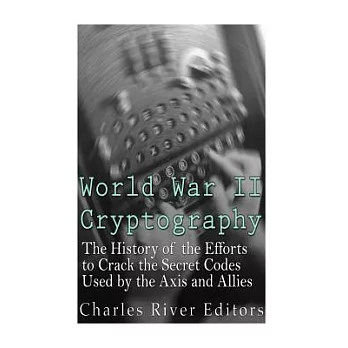*Includes pictures *Profiles the various people and machines behind the cryptology efforts, such as Enigma and MAGIC *Includes online resources and a bibliography for further reading *Includes a table of contents "Hostile armies may face each other for years, striving for the victory which is decided in a single day. This being so, to remain in ignorance of the enemy's condition simply because one grudges the outlay of a hundred ounces of silver in honors and emoluments, is the height of inhumanity." - Sun Tzu on the utility of intelligence and spying, "Art of War," Chapter 13. World War II stood apart in many ways from every earlier war, not least in the way that it reached to every corner of the planet and involved a noticeable segment of humanity's collective resources. Battles erupted not only on land and the sea's surface as they had for centuries, but also in the ocean depths and the windswept heights of the sky. One of the war's most crucial struggles happened in the realm of the unseen, inside the human mind and amid the invisible flow of radio waves. Every war is a battle of wits as intelligence-gathering, tactics, and strategies clash, from the level of individual action up to the grand, overarching schemes of generals and statesmen. Intelligence took on a freshly urgent aspect in World War II, however, as the fate of offensives, armies, and nations came to hang on the struggle to decrypt vital enemy radio traffic and military communications. During the Second World War, cryptography suddenly became a significant factor in warfare because of mid 20th-century advances in communications technology. With radios small and common enough to be fitted into most individual vehicles and readily carried in a man-portable form, information and orders flowed from supreme headquarters to individual squad leaders, tanks, and soldiers at the front and back again. Complex radio networks connected armies to their other elements almost like a nervous system, making unprecedented tactical and strategic coordination between units hundreds of miles apart not only possible but swift and, in some cases, efficient. Decrypting these signals or protecting their contents from enemy spying became one of the touchstones of victory or defeat. "Information warfare" arrived well ahead of the modern computer and satellite networks. The Allies expended much more effort on decrypting Axis codes than the Axis spent attempting to decipher theirs. Standing on the offensive for much of the war, the Germans felt less need for code-breaking than the Allies. Though they found intelligence useful, it had less value to the Wehrmacht's planners, who needed only moderate detail about enemy movements to plan a successful strategy, while leaving tactics in the highly capable hands of small unit leaders trained to take the initiative and react fluidly to the actual battlefield situation. Despite the power of the new technology and its metamorphic effects on warfare, cryptography's story during World War II remained a very human one. Allied leaders initially undervalued the worth of such intelligence, squandering many opportunities with a hidebound rejection of the new. Over time, however, they realized cryptography's potential and made full use of the intelligence it reaped. World War II Cryptography: The History of the Efforts to Crack the Secret Codes Used by the Axis and Allies looks at the shadowy attempts to crack the codes used by the warring powers during the conflict. Along with pictures of important people, places, and events, you will learn about World War II cryptography like never before, in no time at all.



 天天爆殺
天天爆殺  今日66折
今日66折 
























 博客來
博客來 博客來
博客來 博客來
博客來 博客來
博客來 博客來
博客來